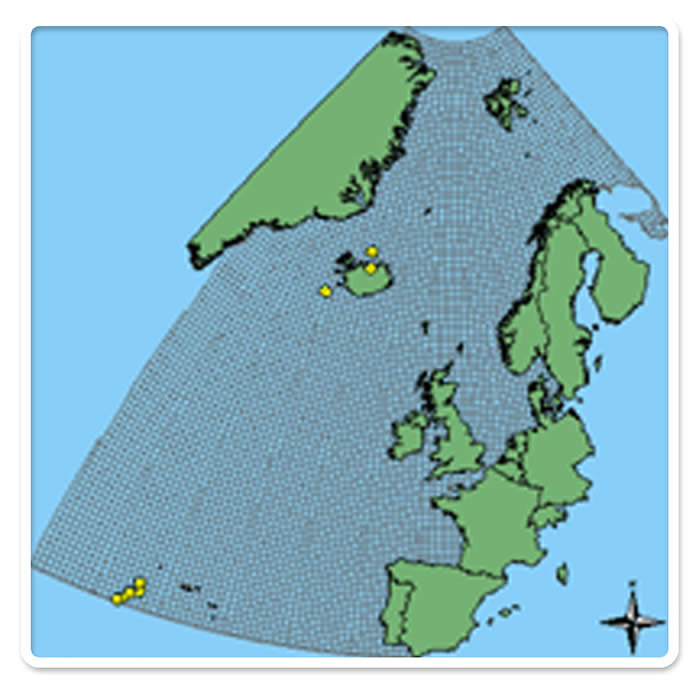Oceanic ridges with hydrothermal vents / fields
 Many people would be forgiven for believing that nothing could live in such an inhospitable environment, but this is not the case. The first deep-sea hydrothermal vent was discovered in 1977 in the Galapagos Rift off the coast of South America but it wasn't until scientists returned a few years later that they discovered the amazing fauna living off the minerals ejected by the vent. Unlike most life on earth, these communities use chemical energy to produce organic compounds from carbon dioxide, and are largely independent of inputs from the photic zone. Many people would be forgiven for believing that nothing could live in such an inhospitable environment, but this is not the case. The first deep-sea hydrothermal vent was discovered in 1977 in the Galapagos Rift off the coast of South America but it wasn't until scientists returned a few years later that they discovered the amazing fauna living off the minerals ejected by the vent. Unlike most life on earth, these communities use chemical energy to produce organic compounds from carbon dioxide, and are largely independent of inputs from the photic zone.
The discovery sent shockwaves through the deep-sea research community, renewing interest in the deep-sea. Scientists can now visit most of the vents in the deep-sea by using advanced deep-diving submersibles. Many of the notable vent fields visited by scientists are found between 1000-4000 m, but some are known to occur at inaccessible depths of greater than 7000 m.

|

 Many people would be forgiven for believing that nothing could live in such an inhospitable environment, but this is not the case. The first deep-sea hydrothermal vent was discovered in 1977 in the Galapagos Rift off the coast of South America but it wasn't until scientists returned a few years later that they discovered the amazing fauna living off the minerals ejected by the vent. Unlike most life on earth, these communities use chemical energy to produce organic compounds from carbon dioxide, and are largely independent of inputs from the
Many people would be forgiven for believing that nothing could live in such an inhospitable environment, but this is not the case. The first deep-sea hydrothermal vent was discovered in 1977 in the Galapagos Rift off the coast of South America but it wasn't until scientists returned a few years later that they discovered the amazing fauna living off the minerals ejected by the vent. Unlike most life on earth, these communities use chemical energy to produce organic compounds from carbon dioxide, and are largely independent of inputs from the